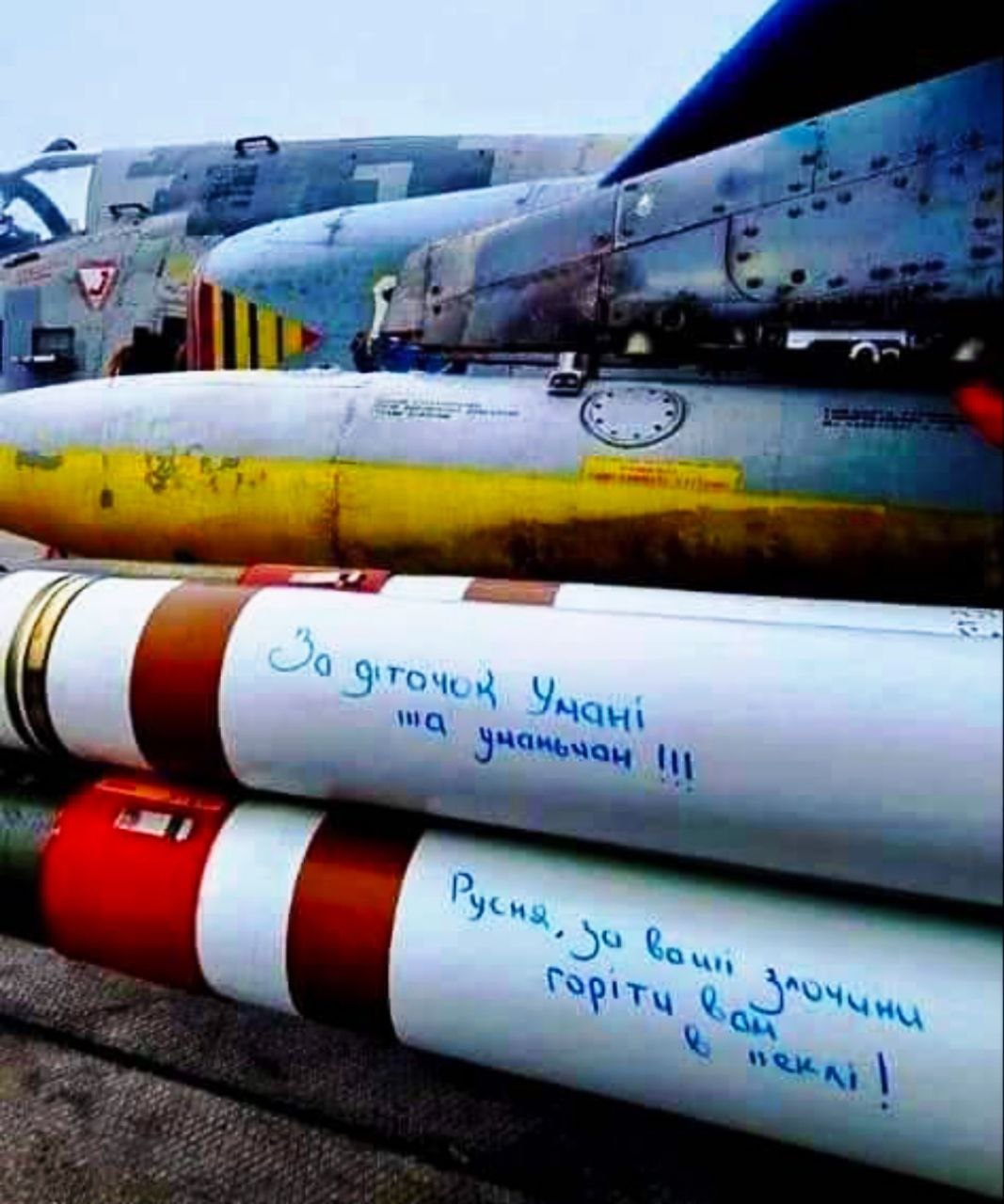Breaking news
Ukrainian Su-25 Frogfoot attack aircraft fire American Zuni air-to-ground rockets.
The commander of the Air Force of the Armed Forces of Ukraine, Lieutenant General Mykola Oleschuk, showed a photo of the Su-25 Frogfoot attack aircraft armed with this type of rocket, mil.in.ua website reports. Another photo was also published on social networks. These aviation rockets are designed to hit ground targets, fortifications, other objects and columns of enemy equipment on the march.
Follow Air Recognition on Google News at this link

US-made Zuni air-to-ground rockets about to arm a Ukrainian Su-25 Frogfoot attack aircraft in April 2023 (Picture source: Osinttechnical)
In January 2023, the U.S. included 4,000 Zuni air-to-ground unguided rockets in one of its military aid packages for Ukraine. The Zuni 5-inch Folding-Fin Aircraft Rocket (FFAR), or simply Zuni, is a 5.0 in (127 mm) unguided rocket developed by the Hunter-Douglas Division of Bridgeport Brass Company and deployed by the U.S. armed forces, and the French Air Force. The rocket was developed for both air-to-air and air-to-ground operations. It can be used to carry various types of warheads, including chaff for countermeasures. It is usually fired from the LAU-10 rocket pod holding four rockets. The Zuni was most actively used by the US Navy and Marine Corps in military campaigns of the 1960s and 1970s, in particular in Vietnam.
The missile was developed by engineers at the US Navy's China Lake Air Weapons Station in the 1950s. Since 1958, it began to be serially produced by the Hunter-Douglas division of the Bridgeport Brass Company. Since 1966, the rocket has been produced under license by the Belgian company Forges de Zeebrugge, which is now owned by Thales. Zuni missiles are launched from the LAU-10 container, which has 4 guides.
In addition to American aircraft of the 60s and 70s, A-10 Thunderbolt II attack aircraft, F-16 Fighting Falcon fighters, F/A-18 Hornet and Bell AH-1W Super Cobra helicopters became the carriers of such rockets.
In the early 1950s, U.S. Navy engineers Naval Ordnance Test Station China Lake began to develop a new 12.7 cm unguided rocket to replace the High Velocity Aircraft Rocket. The Zuni was named after the Zuni Native American tribe in modern-day New Mexico. It was designed as a modular system, to allow the use of different types of warheads and fuzes. The range is set at 8 km. A type of warhead had a proximity fuze, as the rocket was originally intended to be used as an air-to-air rocket. This led to its selection as the basis for the AIM-9 Sidewinder airframe in the early 1950s.
The Zuni was approved for production in 1957. A number of different launchers were tested for the Zuni, e.g. the twin-tube launchers fitted to the Sidewinder launching rails of the Vought F-8 Crusader. However, four-tube LAU-10/A series pods became the most commonly used launcher.
In January 2023, the United States announced that it would be supplying 4,000 Zuni rockets to the Armed Forces of Ukraine for use in the Russo-Ukrainian War. The Su-25 Frogfoot attack aircraft became the carriers of these weapons, which hit the fortifications and other ground objects of the Russian occupying forces on the front line.
The closest counterpart to the Zuni in the arsenal of aviation weapons of the Armed Forces of Ukraine is considered to be the Soviet 122-mm unguided air missile S-13. However, the C-13 is significantly inferior to the Zuni in terms of target engagement.

Zuni air-to-ground rockets about to arm a Ukrainian Su-25 Frogfoot in April 2023 (Picture source: Osinttechnical).


























